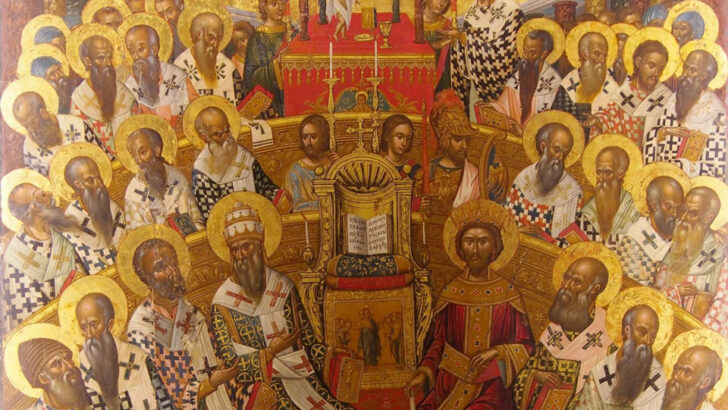T.P. O’Mahony
The Councils of the Church: A Short History,
by Norman P. Tanner SJ
(Herder & Herder, £14.99 / €20.00)
The debate within the Catholic Church about conciliarism has waxed and waned since the 15th to the 19th centuries. The central question – where does ultimate authority in the Church reside, with the Pope or a General Council? – has sharply divided theologians and biblical scholars over the years.
Then in 1870, with its formal declarations on papal primacy and papal infallibility by the First Vatican Council, it seemed that the matter had finally been put to rest. Pope Pius IX, who had convened the Council (which opened on December 8 1869) certainly thought so.
But was Vatican I really a ‘free’ Council, given that well in advance it was known its outcome was what Pius IX and his supporters (one of the most ardent of whom was Cardinal Paul Cullen, the Archbishop of Dublin) wanted.
Although conciliarism was now formally dead, it never really went away: it lived on below the radar in liberal Catholic circles”
There was also the fact that the Council – the 20th in the series of General or Ecumenical (meaning worldwide) Councils since the first in Nicaea in 325 – was brought to a premature closure by the outbreak of the Franco-Prussian on July 19 1870.
This led to the withdrawal of the French troops protecting Rome; the city was quickly seized by the newly emergent Kingdom of Italy, and the authority of the Pope as a secular ruler ended, a situation that was only finally resolved between Italy and the Vatican with the Lateran Treaty between Italy and the Vatican in 1929, creating the situation with which we are all familiar with today.
Although conciliarism was now formally dead, it never really went away: it lived on below the radar in liberal Catholic circles until it was brought back (at least partially) into the open at Vatican II (1962-65) during the debates on collegiality.
The enforced silence of Vatican I on the role of bishops represented ‘unfinished business’; Vatican II sought to engage with this ‘unfinished business’ by considering the nature of episcopal collegiality.
Infallibility
“Although Vatican II almost obsessively asserted its continuity with Vatican I, the council’s promulgation of the doctrine of episcopal collegiality raised questions about the previous council’s doctrines of primacy and infallibility,” says John O’Malley SJ of Georgetown University in his history of Vatican I.
Under the patronage of the Roman Emperor Constantine, it affirmed the Christian faith in a triune God and produced the first version of the Nicaean Creed”
The role, status and authority of General Councils are going to come back into the spotlight this year as plans get underway in the Catholic Church and the World Council of Churches to mark the 1700th anniversary of the Council of Nicaea in 325.
That gathering marked the transition from Christians being a persecuted minority to becoming a Church recognised and protected by the Roman State. Under the patronage of the Roman Emperor Constantine, it affirmed the Christian faith in a triune God and produced the first version of the Nicaean Creed.
Peace
“The event that made an ecumenical council possible was the peace brought to the church by the conversion to Christianity of the Emperor Constantine,” Norman P Tanner SJ tells us in his book The Councils of the Church. “The establishment of Christianity as the favoured religion of the Roman Empire meant that bishops could come from a distance and meet without disturbance. Indeed it was Constantine himself who summoned the Council.”
This creed was accepted by the members of the council as the best formulation of their beliefs, and it condemned the weakened notion of divinity attributed to the Son of God by Arius”
Nicaea is especially remembered for the creed it produced and for its rejection of Arianism, an early heresy which denied the full divinity of Christ. “The creed of Nicaea emerged from the controversy that centered around the teachings of Arius, who was a popular preacher in the city of Alexandria, regarding the divinity of the Son of God, the second person of the Trinity,” explains Tanner.
“This creed was accepted by the members of the council as the best formulation of their beliefs, and it condemned the weakened notion of divinity attributed to the Son of God by Arius, though he is not mentioned by name.”
By the time of the First Council of Constantinople in 381, it was felt that something more needed to be added to the text. This formulation, which contains a more rounded version of the relationship between the three persons of the Trinity, is what has come down to us today and is used in the liturgy of the Mass.
“The apparent simplicity of the creed of Nicaea belies the work that went into producing it,” says Tanner.
Although Tanner does not give specific dates for the Council of Nicaea, we are told by Philip Hughes in his 1961 book The Church in Crisis: A History of the Twenty Great Councils, it opened on May 20, 325, and held its final session barely four weeks after it opened, June 19, 325. This means that events to mark this momentous passage in the Church history will be taking place through Christendom.


 An iconic image of the Nicaean Council presided over by the Emperor Constantine
An iconic image of the Nicaean Council presided over by the Emperor Constantine 